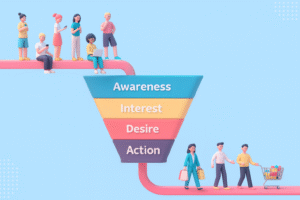In 2025, competition is fierce, and giving users a great experience is no longer a luxury; it’s a must.
A single issue or mistake in your software may make customers angry, hurt your brand’s reputation, and even hurt your business.
This is where a strong Quality Assurance (QA) methodology, led by good QA testing strategies, can make a big difference in any software development project.
A clear QA strategy will see your software being not only useful but also powerful, secure, and user-friendly.
For businesses looking to innovate and stay ahead of the curve, partnering with a proficient software testing service provider can make all the difference.
The partners would come with a lot of experience and knowledge and assist you in applying more intelligent testing strategies that would appeal to your business objectives.
In this comprehensive guide, we’ll explore the top 10 QA testing strategies that can help you build better software, faster.
Understanding the Landscape: Types of QA Testing
It’s important to know the different kinds of QA testing before we go into the strategies. Each type has a different job to do to make sure the software is of high quality.
Here are some of the most prevalent types:
- Functional testing: This kind of testing would ensure that every functionality of the software application is functioning as per the requirement specification.
- Non-Functional Testing: It is concerned with the non-functional testing of the software, such as its performance, usability, and reliability.
- Regression Testing: It is carried out so that the new code additions do not negatively impact the existing features.
- Security Testing: This is an essential type of testing that exposes the vulnerabilities, threats, and risks of a software application.
- Performance Testing: This testing is conducted to find out how a system can perform in relation to responsiveness and stability when a given workload is applied.
Importance of QA in Software Development
Investment in QA is not an act of bug finding but a way of creating a long-term business. Here’s why QA is so important:
- Increased Customer Satisfaction: A quality product that does not have bugs and glitches will result in improved customer experience and satisfaction.
- Cost Savings: It is much more affordable to identify and eliminate bugs in the early stages of the development cycle than it is to correct bugs once the product is released.
- Better Brand Reputation: The product with high performance and reliability gains trust and a reputation for your brand in the market.
- Increased Revenue: A good product is more likely to get and keep users, which means more money and profit.
Top 10 Key QA Testing Strategies for Success
Now, let’s look at the top ten QA testing methods that may help you make smarter software:
Adopt a Risk-Based Testing Approach
This is one of the best ways to do QA testing to get the most out of your resources and have the biggest influence.
Risk-based testing does not test everything equally intensively; instead, it prioritizes features and functionalities based on their likelihood of failure and potential business impact, particularly when failure is highly likely.
Through a comprehensive risk assessment of the project at an early stage, you may be able to identify those areas prone to high risk that need stricter testing.
This will enable you to spend your testing resources more efficiently, ensuring that the most critical parts of your application are well vetted before release.
Implement Shift-Left Testing
The shift-left strategy entails taking testing to a new position earlier in the software development life cycle.
With testing, particularly early on, you are able to detect and remedy defects at the point at which they are least difficult and most cost-effective.
The strategy helps in the creation of a quality culture where developers and testers work hand-in-hand since the requirements gathering stage up to deployment.
Moving left ensures that fewer bugs reach the later stages of development, towards a more efficient and cost-effective process. It’s a foundational element of modern QA software testing services.
Leverage AI in Test Automation
Automation of tests is important in enhancing the speed and extent of testing.
Nevertheless, conventional automation is fragile and slow to serve. By incorporating AI-enhanced engineering solutions, you can make your test automation smarter and more resilient.
AI-based tools may help in creating test cases, visual testing, and self-healing tests, which make changes in response to changes in the UI.
This not only enhances the effectiveness of your testing, but it also leaves your QA team to pay more attention to more intricate and strategic work, including exploratory testing.
Integrate Comprehensive Security Testing
Security is not a luxury in the current age of rising cyber threats. Security testing should be involved in the development process of a strong QA strategy.
This entails performing frequent vulnerability tests, penetration tests, as well as reading security codes in order to detect and address the possible security vulnerabilities.
In the case of industries that have a high level of regulation, like in the healthcare sector, it is imperative to have a testing strategy that complies with regulations, such as HIPAA.
Prioritize Performance Testing from Day One
One of the key areas of the user experience is performance. When an application is very slow or unresponsive, it may cause user frustration and abandonment.
This is why performance testing has been included in the development process since its inception.
Through load testing, stress testing, and scalability testing during the development cycle, you can identify performance bottlenecks and address them before they impact your users.
This active strategy of performance enables your application to run swiftly and dependably, supporting the projected user load.
Champion Accessibility Testing
An inclusive application is an application that can be used by all people, irrespective of their capabilities.
Accessibility testing will provide accessibility to your application by individuals with disabilities, including visual or hearing impairment.
This includes compliance testing with accessibility guidelines such as the Web Content Accessibility Guidelines (WCAG) and evaluating the user experience with assistive technologies to determine how people with disabilities can utilize the site.
Making accessibility a priority is not only a way to increase the number of people who might use it, but also to show your social responsibility.
Focus on User Experience (UX) Testing
An efficient application does not always have to be user-friendly. The UX testing is devoted to the general experience of working with the application, as viewed by the user.
This assessment evaluates the usability, intuitiveness, and overall user experience. You may get useful input on how to make your app’s design and flow better by testing it with real users.
This way, you’ll have an app that works and is also fun to use.
Embrace Continuous Testing in a DevOps Culture
In a DevOps environment where software needs to be delivered quickly and efficiently, testing should be a regular part of the process.
Integrating software engineering intelligence with your CI/CD and continuous-testing pipelines gives you real-time code quality signals and risk insights, helping teams release faster without compromising reliability.
Continuous testing is the process of automating tests, i.e., incorporating them in the CI/CD pipeline, such that all the changes in code are automatically tested once they are introduced.
This lets engineers get quick input, which helps them find and fix problems quickly. Continuous testing is an important part of current QA testing methodologies.
It helps make sure that quality is high even while development is moving quickly.
Foster a Proactive and Collaborative QA Culture
Quality is a collective responsibility. The best enterprise testing strategies are those that introduce a culture of quality to the whole organization.
This implies that all the developers, testers, product managers, and stakeholders would be involved in ensuring the high quality of the product. An active QA culture promotes free communication, cooperation, and a continuous improvement attitude.
Establish Data-Driven QA with Key Metrics and Reporting
To continually improve your QA process, you must be able to measure its effectiveness.
The data-based approach to QA implies the setting of the key performance indicators (KPIs) and measures to monitor the course and quality of your testing work.
By regularly analyzing data on things like defect density, test coverage, and customer satisfaction, you can identify areas for improvement and make informed decisions to optimize your QA testing strategies.
A reliable software testing service provider will always provide detailed reporting and analytics to demonstrate the value of their services.
Integrating Testing Strategies Throughout the SDLC
Integrated QA processes are the best that exist in the entire software development lifecycle (SDLC). This implies that testing does not only occur at the point of release, but is a continuous exercise that commences at the gathering of the requirements and extends up to the post-release monitoring.
Through the continuous testing method, you will be able to make quality a collective responsibility, and the entire team will be dedicated to producing a top-quality product.
As a leading software testing service provider, we have seen firsthand the transformative power of integrating QA testing strategies throughout the SDLC.
It results in enhanced teamwork, accelerated feedback, and eventually a quality product, which goes beyond the expectations of the user.
Conclusion
The strategic approach to QA is not a mere practice in the rapidly changing software development world, but it is a key to success.
Using the QA testing techniques described in this article can help you create software that is better, save money on development, and provide a better user experience.
You might want to employ a business that solely conducts software testing if you need help with the hard job of testing software.
Because they know a lot about it and have worked in the industry for a long time, they can help you employ the right QA software testing services and AI-enhanced engineering solutions to make your software development better.
Not only are you putting money into your product when you invest in a good QA strategy, but you’re also putting money into the future of your firm.









